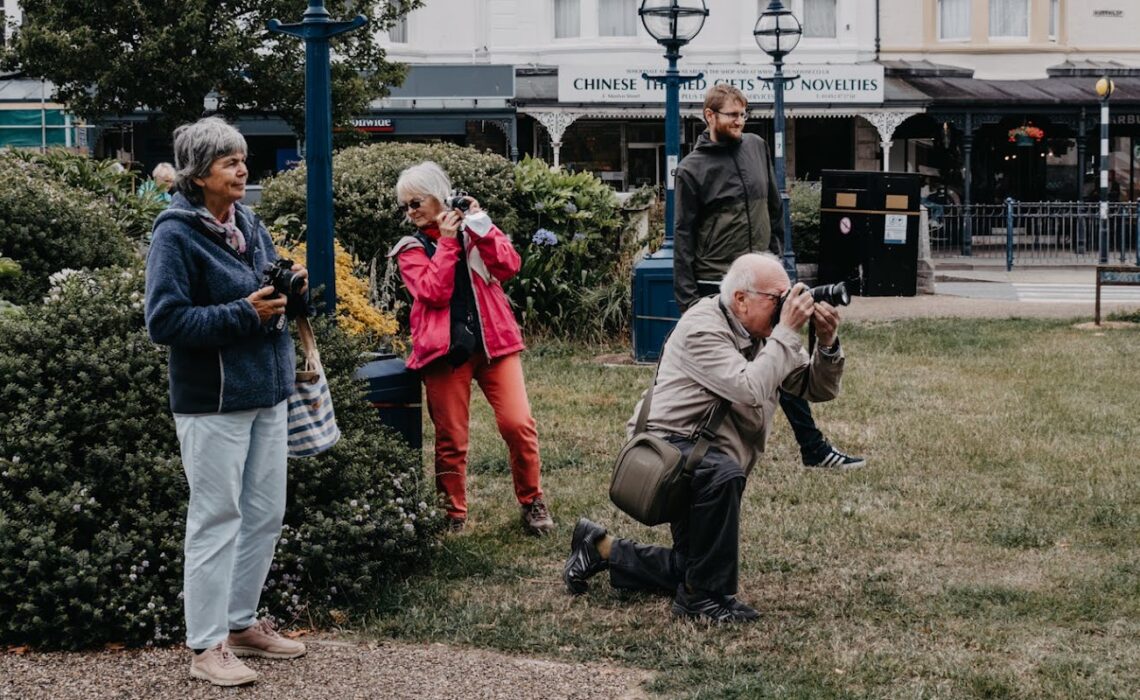
Traveling has the power to transform lives by introducing one to new cultures, viewpoints, and ideas. Communication barriers, however, can frequently make it difficult for travelers who are deaf or hard of hearing to fully engage with and enjoy their travel experiences. Technology has been instrumental in removing these obstacles by offering creative solutions that enhance the deaf and hard of hearing community’s access to information and services in the travel and tourism sector.
The Impact of Technology on Interpreting for Travel and Tourism
Real-time Translation Services: The creation of real-time translation services is one of the biggest technological advances for travelers who are hard of hearing or deaf.
With the use of speech recognition technology, these services translate spoken words into text in real time so that passengers can read what is being said to them.
When traveling, deaf and hard of hearing people now find it much simpler to interact with hotel staff, tour guides, and other service providers thanks to technology.
Mobile Apps: A variety of apps that provide real-time translation services are now available to travelers.
These apps facilitate communication between deaf and hard-of-hearing people on the go by translating spoken language into text or sign language.
Certain applications offer both textual and visual details about tourist destinations, assisting visitors in comprehending their surroundings.
Video Remote Interpreting (VRI): VRI enables video calls between hard-of-hearing and deaf travelers and interpreters using sign language.
This can be especially helpful in scenarios where there is not a physical interpreter available, like when traveling through remote areas or when you need help right away.
To make sure their needs are satisfied while they are traveling, VRI can assist customers in interacting with hotel staff, airport employees, and other service providers.
Captioning Services: Airlines, tour operators, and museums are just a few of the travel-related businesses that now provide captioning services for people who are hard of hearing.
With the help of these services, travelers can more easily comprehend and enjoy videos, presentations, and other audiovisual content.
Benefits of Technology for Deaf and Hard of Hearing Travelers
Photo by Andrea Piacquadio
Enhanced Communication: Thanks to technological advancements, deaf and hard of hearing tourists can now communicate with service providers, other tourists, and locals in the places they visit with greater ease. As a result, travelers have had fewer frustrating and confusing experiences, which has improved their travel experiences.
Enhanced Independence: Deaf and hard-of-hearing tourists can travel through foreign environments with greater independence thanks to technology. They do not need to ask for help because they can get information about lodging, transportation, and attractions on their own.
Enhanced Safety: Travelers who are hard of hearing or deaf can now feel more secure thanks to technology. Travelers can communicate in an emergency by using VRI and real-time translation services, which will help them get the help they need as soon as possible.
Cultural Exchange: Technology has made it possible for deaf and hard-of-hearing tourists to interact more culturally with the communities they visit by removing barriers to communication. Nowadays, it is easier for tourists to interact with locals, discover more about their culture, and share their personal experiences, all of which enhance the trip.
Access to Emergency Services: Travelers who are hard of hearing or deaf have better access to emergency services thanks to technology. Travelers can communicate with emergency responders efficiently and promptly with the aid of VRI and real-time translation services, guaranteeing that they get the help they require on time.
Increased Involvement in Tours and Activities: Thanks to technology, travelers who are hard of hearing or who are deaf can now take part in tours and activities that they were not previously able to. Travelers’ overall experience is improved by being able to participate fully in guided tours, performances, and other group activities thanks to captioning services and sign language interpretation.
Greater Confidence and Peace of Mind: Thanks to technology, deaf and hard of hearing travelers can now travel with greater confidence and peace of mind as they have access to communication tools and information. Knowing that they have the means to communicate and obtain help when needed, they are better equipped to move around in unfamiliar situations with ease and independence.
Challenges and Future Directions
Even though technology has greatly improved deaf and hard of hearing travelers’ access to information and services, there are still issues that need to be resolved. For instance, not all companies in the travel industry are set up to offer accessibility services, and there is a dearth of knowledge regarding the requirements of travelers who are hard of hearing or deaf in the sector.
It will be crucial going forward for travel agencies to make investments in staff training so they can assist clients who are hard of hearing or deaf and to make sure their facilities and services are accessible. Furthermore, the travel experiences of people who are deaf or hard of hearing will be further improved by ongoing technological advancements, such as the creation of more precise and trustworthy translation services.
Conclusion
The travel and tourism experiences of the hard of hearing and deaf have been completely transformed by technology. Travelers who are hard of hearing or deaf can now communicate with others, access information and services, and navigate unfamiliar environments with greater ease thanks to real-time translation services, mobile apps, VRI, and captioning services. The travel experiences of those who are deaf or hard of hearing will only get better as technology develops, creating new avenues for cultural exploration and interchange.
For those who are looking for additional support, Unspoken Language Services offers interpreting services to help bridge the communication gap between the deaf and hearing communities.
Photo Credit to: Photo by Lisa Fotios

